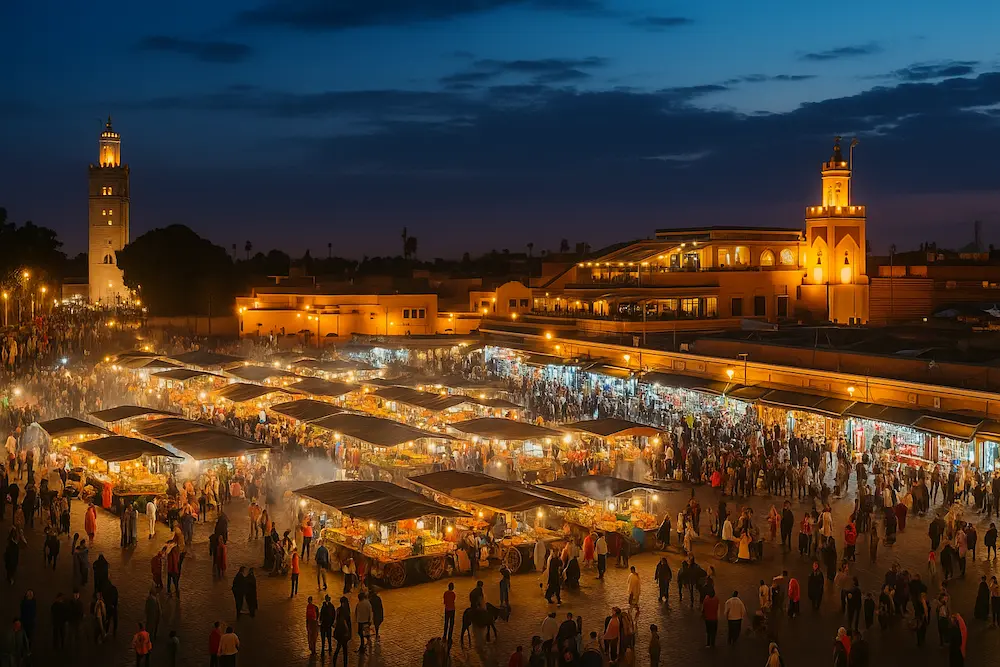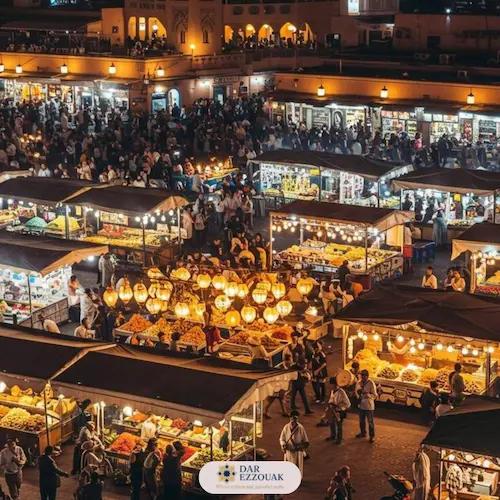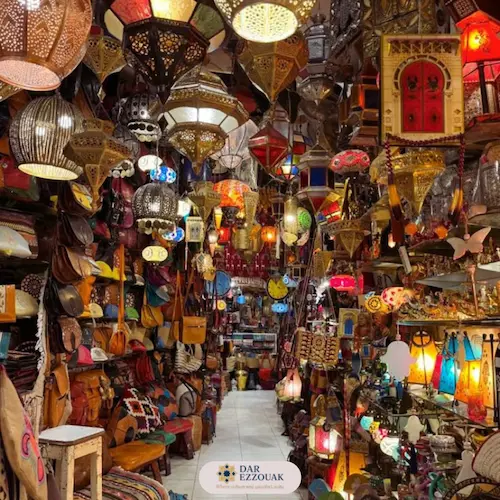
Marrakech: One of the Most Visited Cities in the World – Here’s Why
Discover why the Marrakech most visited city reputation is well deserved — UNESCO‑listed medina, Jemaa el‑Fnaa, palaces, hammams, day trips, and authentic Moroccan hospitality.
Nestled at the foot of the Atlas Mountains, Marrakech is not just a city — it’s an experience. With vibrant colors, enchanting sounds, and intoxicating scents, it captures millions of hearts each year. Once a powerful imperial capital, today it proudly stands among the most visited cities in the world.
A Global Destination Rich in Culture and History
Known as the “Red City”, Marrakech was founded in 1062 and flourished under several Moroccan dynasties. Its ochre walls and maze‑like medina are listed by UNESCO. Learn more about the city on Wikipedia. This deep heritage is a key reason travelers rank Marrakech so highly.
Jemaa el‑Fnaa: The Pulse of Marrakech

By day, juice sellers, performers and artisans animate the square. By night, it becomes a buzzing open‑air restaurant serving tagines, brochettes and couscous—an unmissable stop in the Marrakech most visited city itinerary.
Architectural Wonders Around Every Corner
- Koutoubia Mosque — Iconic 77‑meter minaret that dominates the skyline.
- Bahia Palace — 19th‑century residence with carved cedar and zellige.
- Ben Youssef Madrasa — Masterpiece of Moorish design and symmetry.
- Saadian Tombs — 16th‑century necropolis revealed in 1917.
The Allure of the Souks

Each alley reveals a trade, from tanners and dyers to metalworkers. Haggling is part of the fun — be friendly and aim for a fair price.
A Gateway to Natural Beauty
- Ourika Valley — Waterfalls & Berber villages. Plan a day trip: Ourika Valley & Atlas Mountains.
- Agafay Desert — Camel rides, quads and stargazing near Marrakech.
- Ouzoud Waterfalls — One of North Africa’s highest cascades.
- Imlil & Toubkal National Park — Gateway to Mount Toubkal hikes.
Luxury Meets Authenticity
Marrakech blends 5‑star luxury with tradition. From resorts and hammam spas to intimate riads, you can pair comfort with culture in a single stay.
Wellness and Hammam Culture
Experience a traditional Moroccan hammam — steam, black soap, kessa scrub, rhassoul clay and massage — or join yoga and wellness retreats around the city.
How to Plan Your Stay in Marrakech
Best time to visit
March–May and September–November offer warm days and cool evenings. Winter is mild; summers can be hot.
Getting around
Walk the medina, use small taxis (agree on price or ensure the meter) and book licensed transfers for airport trips.
Where to stay near Marrakech
For calm after the souks, choose a countryside guest house 30 minutes from the city. Discover rooms & suites at Dar Ezzouak — elegant décor, generous spaces and warm Moroccan hospitality.
Learn a few words of Darija
A little Arabic goes a long way: learn basic Darija to greet locals and enrich your trip.
UNESCO heritage, living traditions, desert sunsets and mountain day trips — all in one destination. Visit once and you’ll want to return.
Plan Your Marrakech Trip →
Marrakech Most Visited City – FAQ
Why is Marrakech considered one of the most visited cities?
Because it combines a UNESCO‑listed medina, iconic landmarks, vibrant souks, hammams and easy access to mountains and desert — a rare mix in one trip.
How many days do you need in Marrakech?
Three days cover the medina highlights; five to seven days let you add Ourika, Agafay or Ouzoud.
Is Marrakech safe for tourists?
Yes, it’s generally safe. As in any busy city, keep valuables secure, agree fares in advance and use licensed guides and transfers.
What should I wear when visiting religious sites?
Dress modestly (shoulders and knees covered). Respect photography rules and prayer times.
Where can I experience a traditional hammam?
Choose reputable spas or riads that offer classic black‑soap scrub and rhassoul treatment. Ask your host for recommendations.
